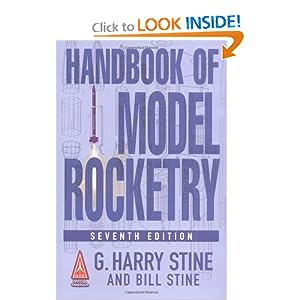Man, I can kit build-em ,design-scratch-build-em, But Ill be the first to tell ya, this motor thing I am just not getting at this point.And thats not a good thing at all for a rocketeer.

I need to get a DVD or some kind of schooling on this issue.
All this was found on line, here and there. I tried to put some info together so you can start to get a handle on the motor thing.
Newton, The amount of force required to accelerate one kg, one meter per second per second. 4.45 newtons equals one pound of force.
(EMRR Glossary Library)
Newton-Second, The typical unit of measurement for rocket thrust. One newtonsecond is one newton of thrust maintained for one second.
(EMRR Glossary Library)
Impulse, Thrust force multiplied by time. The units of measurement are usually Newtons and Seconds.
(EMRR Glossary Library)
Total Impulse, The total thrust produced by a rocket motor across its full burn time. Usually expressed in Newton-seconds.
(EMRR Glossary Library)
Average Thrust , The total impulse (in Newton-seconds) divided by the length of burn time. Example; a K185 motor has a total impulse of approximately 1400 Newtonseconds, and burns for 7.5 seconds. 1387.5 Newton-seconds divided by 7.5 equals 185 newtons average thrust.
(EMRR Glossary Library)
Motor Designations
Each AeroTech composite hobby rocket motor or reload kit has a designation
which provides important information about performance. The designation is read as follows:
G64-4W
First Letter
The first letter is a code which indicates
total impulse in Newton seconds produced by the motor. Each succeeding letter has up to twice the power of the preceding letter. A G motor has up to 160 N-seconds of total impulse.
(Aerotech 2009 - 2010 Catalog, page 3.)
Total Impulse: The total thrust produced by a rocket motor across its full burn time. Usually expressed in Newton-seconds.
(EMRR Glossary Library)
First Number
The first number indicates the motor's
average thrust in Newtons.
A Newton is equivalent to 0.225 pounds of force.
(Aerotech 2009 - 2010 Catalog, page 3.)
Average Thrust: The total impulse (in Newton-seconds) divided by the length of burn time. Example; a K185 motor has a total impulse of approximately 1400 Newtonseconds, and burns for 7.5 seconds. 1387.5 Newton-seconds divided by 7.5 equals 185 newtons average thrust.
(EMRR Glossary Library)
Second Number
The second number shows the time delay, in seconds between propellant
burn-out and activation of the ejection charge.
(Aerotech 2009 - 2010 Catalog, page 3.)
Second Letter
The second letter indicates the propellant formulation of the motor.In this case the "W" indicates "White Lightning". Additional letters or numbers may
be added to denote other performance characteristics.
(Aerotech 2009 - 2010 Catalog, page 3.)
Then you need to find out about the 5:1 launch ratio.
__________________










